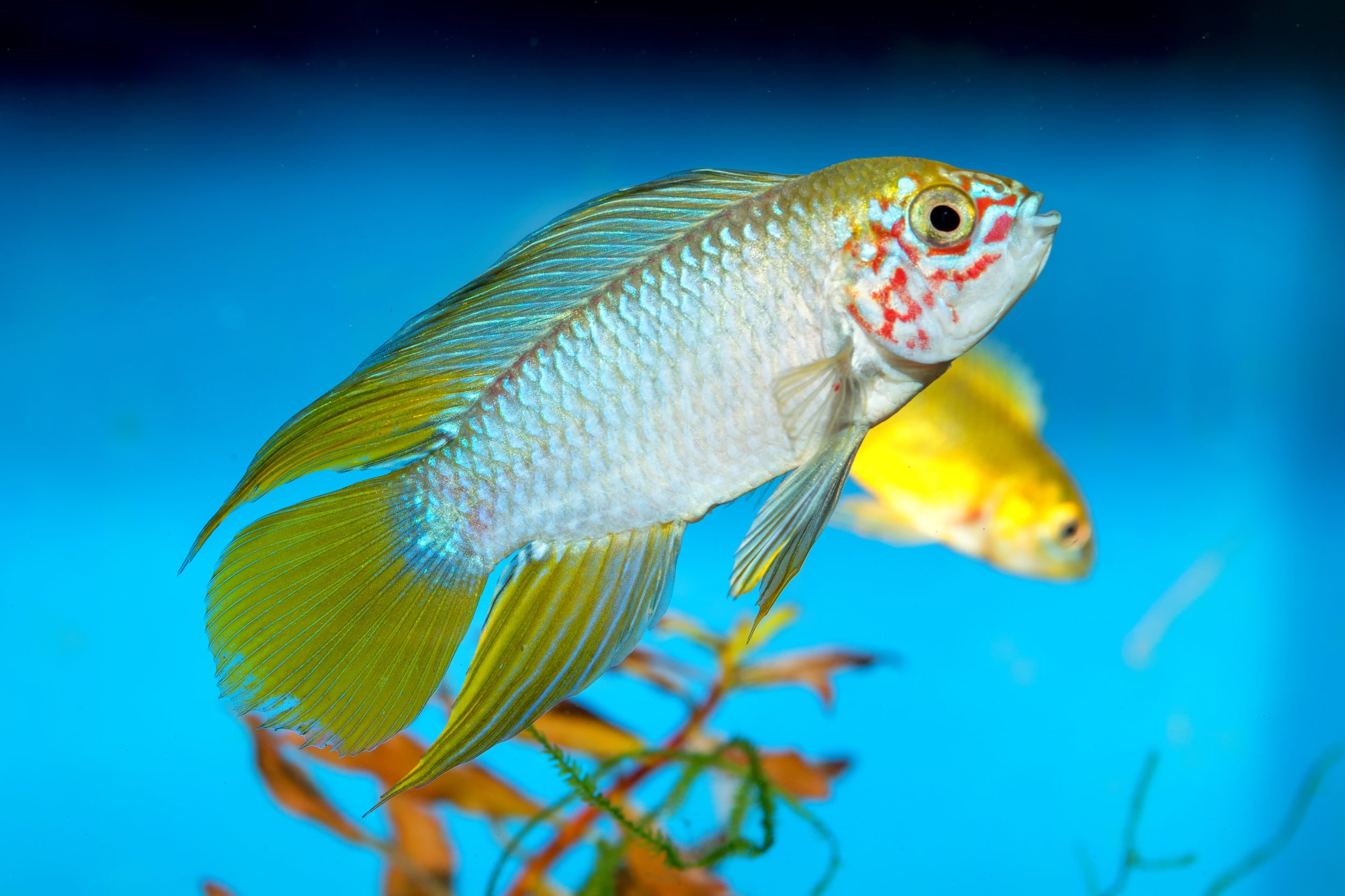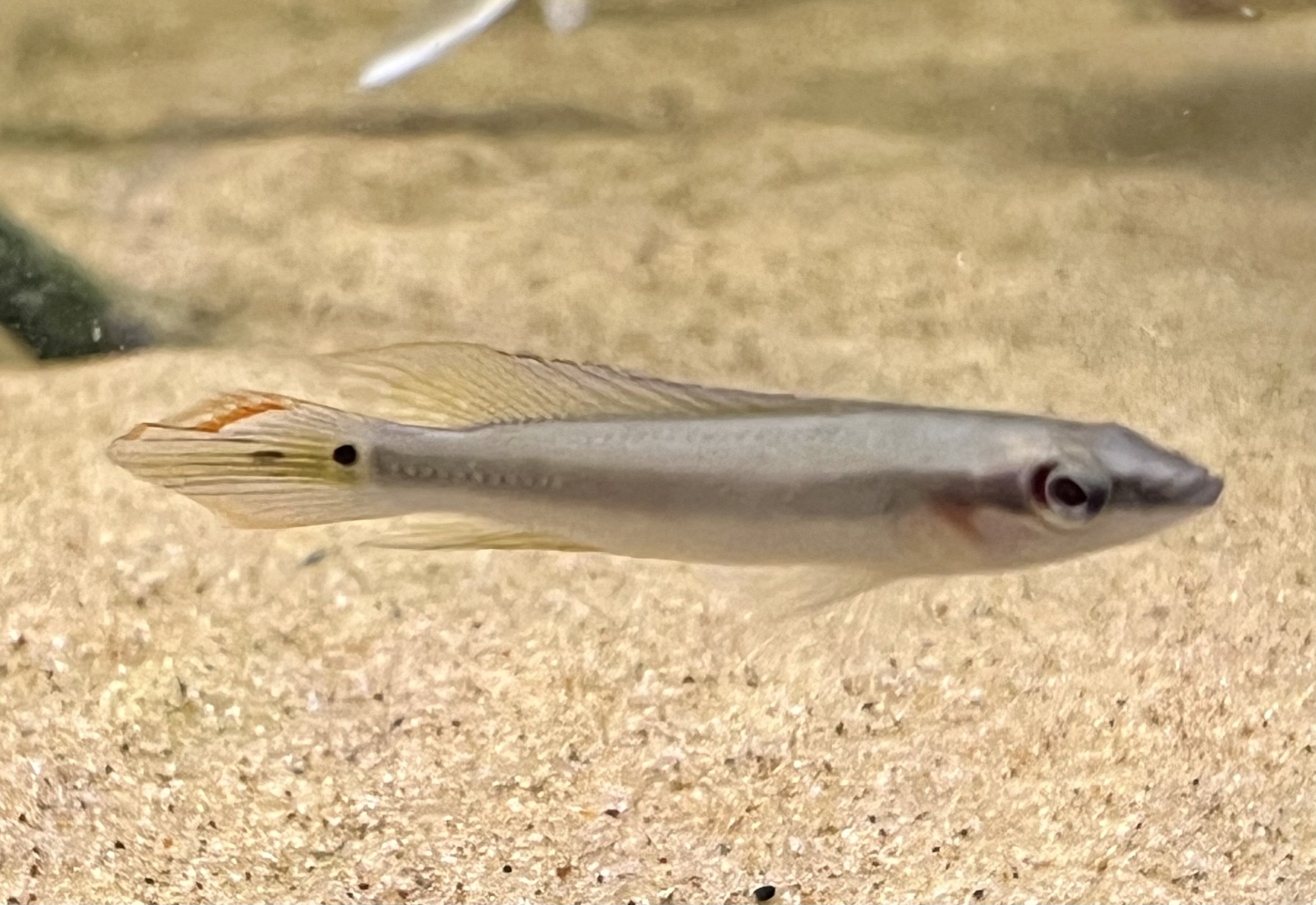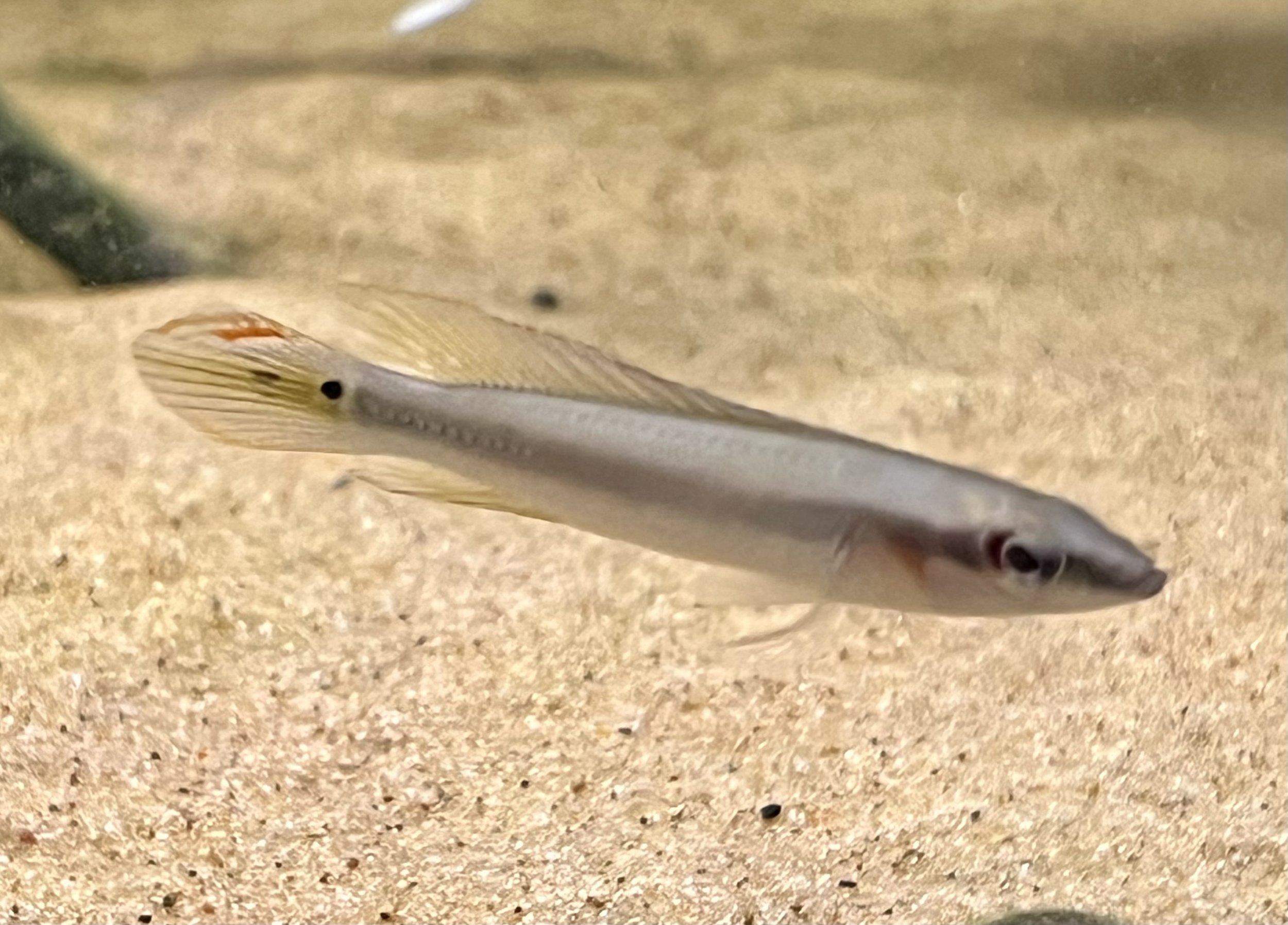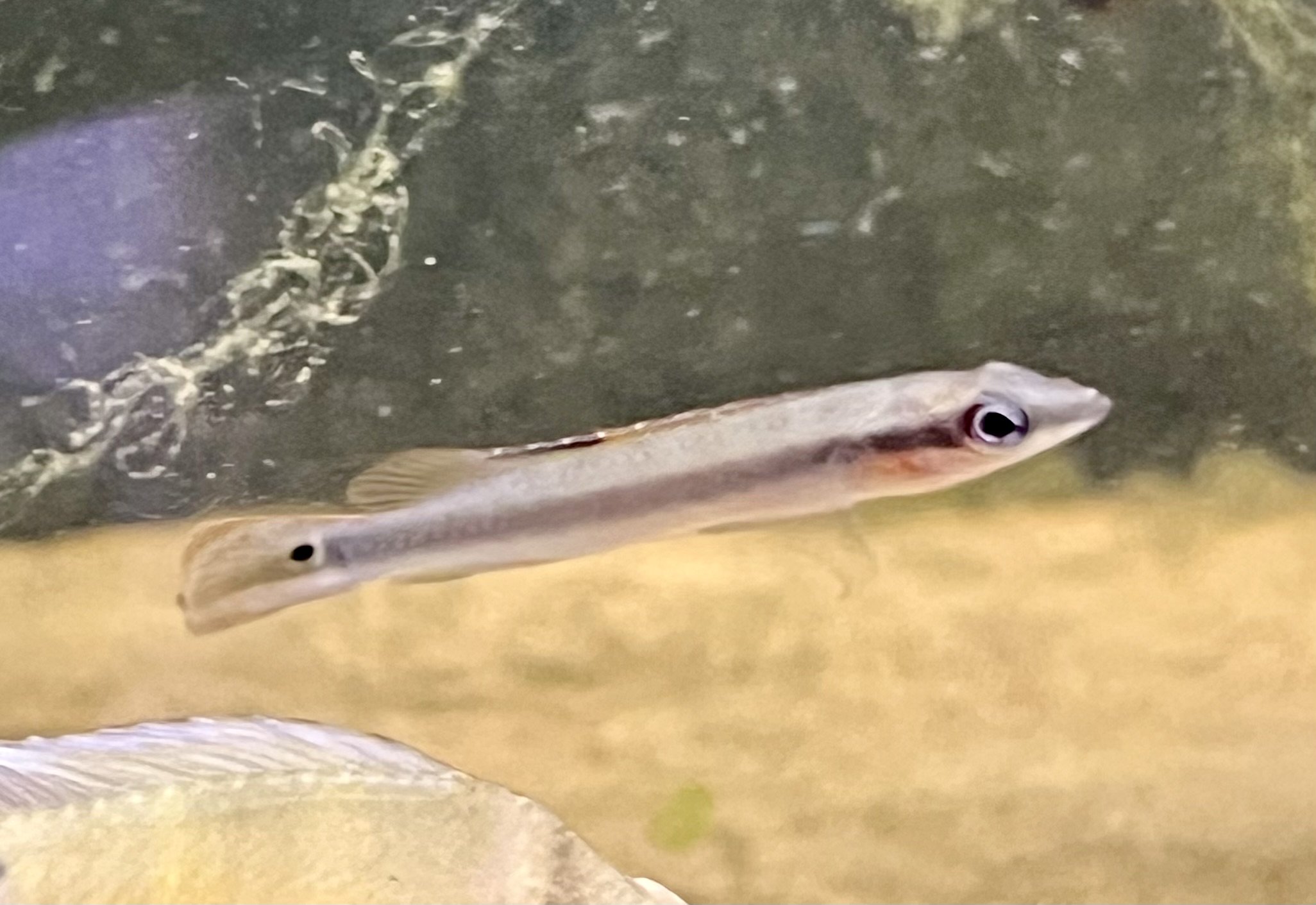 Image 1 of
Image 1 of


Apistogramma Borellii UNSEXED
Apistogramma borellii, commonly known as Borelli's Dwarf Cichlid or the Umbrella Cichlid, is a peaceful and colorful species of dwarf cichlid that has become a favorite among aquarists for its striking appearance, small size, and ease of care. Native to the slow-moving waters of the Paraguay River Basin in South America, particularly in Paraguay, Brazil, and Argentina, this species thrives in soft, slightly acidic waters with dense vegetation. Its vibrant colors and gentle demeanor make it an excellent choice for both novice and experienced aquarists alike.
Physically, Apistogramma borellii is known for its vibrant yet subtle coloration. Males typically display a body color that ranges from soft blue or lavender to bright yellow, depending on their mood and health. They often have bright yellow heads with electric blue highlights along the body and face. The name "Umbrella Cichlid" comes from the fan-shaped dorsal fin, which can be brightly colored and elongated in males. Females are smaller and less vividly colored, usually a pale yellow or gray. Adult males grow to about 2.5 to 3 inches (6 to 7.5 centimeters), while females are slightly smaller, reaching about 2 inches (5 centimeters).
In the aquarium, Apistogramma borellii thrives in well-planted environments that mimic its natural habitat. A soft, sandy substrate is ideal, as these fish like to sift through the sand in search of food. The tank should be decorated with plenty of plants, driftwood, rocks, and caves to provide hiding spots and reduce aggression during breeding or territorial disputes. Borelli's Dwarf Cichlids are relatively peaceful for cichlids, and they can be housed with other small, non-aggressive species such as tetras, Corydoras, and small rasboras. However, like most dwarf cichlids, males can become territorial, particularly during breeding, so providing enough space and hiding places is essential.
Water parameters for Apistogramma borellii should closely resemble their natural habitat. They prefer soft, slightly acidic to neutral water with a pH range of 6.0 to 7.5 and temperatures between 70 to 78°F (21 to 26°C). Borelli's Dwarf Cichlids are more tolerant of cooler water temperatures than many other Apistogramma species, making them well-suited for a wider range of aquarium conditions. Regular water changes and good filtration are important for maintaining water quality, as these fish can be sensitive to poor water conditions.
Feeding Apistogramma borellii is relatively easy, as they are omnivorous. They will readily accept a variety of foods, including high-quality flakes or pellets, as well as live or frozen foods such as bloodworms, brine shrimp, and daphnia. Providing a varied diet that includes both protein-rich and plant-based foods will help maintain their vibrant coloration and overall health.
Breeding Apistogramma borellii in captivity is relatively easy, especially if they are provided with the right conditions. These fish are cave spawners, with females laying eggs on the ceilings or walls of caves or crevices. The female will fiercely guard the eggs and fry, while the male defends the surrounding territory. The eggs typically hatch within 2 to 3 days, and the fry become free-swimming after about a week. At this stage, the fry can be fed on infusoria or specially prepared fry food, and later transitioned to baby brine shrimp as they grow.
Overall, Apistogramma borellii is an ideal choice for aquarists looking to keep a peaceful, colorful, and relatively easy-to-care-for dwarf cichlid. Their vibrant colors, gentle nature, and interesting breeding behaviors make them a fascinating and rewarding addition to well-maintained freshwater aquariums. With proper care and attention to their specific needs, these beautiful fish can thrive and even breed in captivity, offering aquarists the chance to enjoy their unique personalities and stunning colors.
Apistogramma borellii, commonly known as Borelli's Dwarf Cichlid or the Umbrella Cichlid, is a peaceful and colorful species of dwarf cichlid that has become a favorite among aquarists for its striking appearance, small size, and ease of care. Native to the slow-moving waters of the Paraguay River Basin in South America, particularly in Paraguay, Brazil, and Argentina, this species thrives in soft, slightly acidic waters with dense vegetation. Its vibrant colors and gentle demeanor make it an excellent choice for both novice and experienced aquarists alike.
Physically, Apistogramma borellii is known for its vibrant yet subtle coloration. Males typically display a body color that ranges from soft blue or lavender to bright yellow, depending on their mood and health. They often have bright yellow heads with electric blue highlights along the body and face. The name "Umbrella Cichlid" comes from the fan-shaped dorsal fin, which can be brightly colored and elongated in males. Females are smaller and less vividly colored, usually a pale yellow or gray. Adult males grow to about 2.5 to 3 inches (6 to 7.5 centimeters), while females are slightly smaller, reaching about 2 inches (5 centimeters).
In the aquarium, Apistogramma borellii thrives in well-planted environments that mimic its natural habitat. A soft, sandy substrate is ideal, as these fish like to sift through the sand in search of food. The tank should be decorated with plenty of plants, driftwood, rocks, and caves to provide hiding spots and reduce aggression during breeding or territorial disputes. Borelli's Dwarf Cichlids are relatively peaceful for cichlids, and they can be housed with other small, non-aggressive species such as tetras, Corydoras, and small rasboras. However, like most dwarf cichlids, males can become territorial, particularly during breeding, so providing enough space and hiding places is essential.
Water parameters for Apistogramma borellii should closely resemble their natural habitat. They prefer soft, slightly acidic to neutral water with a pH range of 6.0 to 7.5 and temperatures between 70 to 78°F (21 to 26°C). Borelli's Dwarf Cichlids are more tolerant of cooler water temperatures than many other Apistogramma species, making them well-suited for a wider range of aquarium conditions. Regular water changes and good filtration are important for maintaining water quality, as these fish can be sensitive to poor water conditions.
Feeding Apistogramma borellii is relatively easy, as they are omnivorous. They will readily accept a variety of foods, including high-quality flakes or pellets, as well as live or frozen foods such as bloodworms, brine shrimp, and daphnia. Providing a varied diet that includes both protein-rich and plant-based foods will help maintain their vibrant coloration and overall health.
Breeding Apistogramma borellii in captivity is relatively easy, especially if they are provided with the right conditions. These fish are cave spawners, with females laying eggs on the ceilings or walls of caves or crevices. The female will fiercely guard the eggs and fry, while the male defends the surrounding territory. The eggs typically hatch within 2 to 3 days, and the fry become free-swimming after about a week. At this stage, the fry can be fed on infusoria or specially prepared fry food, and later transitioned to baby brine shrimp as they grow.
Overall, Apistogramma borellii is an ideal choice for aquarists looking to keep a peaceful, colorful, and relatively easy-to-care-for dwarf cichlid. Their vibrant colors, gentle nature, and interesting breeding behaviors make them a fascinating and rewarding addition to well-maintained freshwater aquariums. With proper care and attention to their specific needs, these beautiful fish can thrive and even breed in captivity, offering aquarists the chance to enjoy their unique personalities and stunning colors.
Apistogramma borellii, commonly known as Borelli's Dwarf Cichlid or the Umbrella Cichlid, is a peaceful and colorful species of dwarf cichlid that has become a favorite among aquarists for its striking appearance, small size, and ease of care. Native to the slow-moving waters of the Paraguay River Basin in South America, particularly in Paraguay, Brazil, and Argentina, this species thrives in soft, slightly acidic waters with dense vegetation. Its vibrant colors and gentle demeanor make it an excellent choice for both novice and experienced aquarists alike.
Physically, Apistogramma borellii is known for its vibrant yet subtle coloration. Males typically display a body color that ranges from soft blue or lavender to bright yellow, depending on their mood and health. They often have bright yellow heads with electric blue highlights along the body and face. The name "Umbrella Cichlid" comes from the fan-shaped dorsal fin, which can be brightly colored and elongated in males. Females are smaller and less vividly colored, usually a pale yellow or gray. Adult males grow to about 2.5 to 3 inches (6 to 7.5 centimeters), while females are slightly smaller, reaching about 2 inches (5 centimeters).
In the aquarium, Apistogramma borellii thrives in well-planted environments that mimic its natural habitat. A soft, sandy substrate is ideal, as these fish like to sift through the sand in search of food. The tank should be decorated with plenty of plants, driftwood, rocks, and caves to provide hiding spots and reduce aggression during breeding or territorial disputes. Borelli's Dwarf Cichlids are relatively peaceful for cichlids, and they can be housed with other small, non-aggressive species such as tetras, Corydoras, and small rasboras. However, like most dwarf cichlids, males can become territorial, particularly during breeding, so providing enough space and hiding places is essential.
Water parameters for Apistogramma borellii should closely resemble their natural habitat. They prefer soft, slightly acidic to neutral water with a pH range of 6.0 to 7.5 and temperatures between 70 to 78°F (21 to 26°C). Borelli's Dwarf Cichlids are more tolerant of cooler water temperatures than many other Apistogramma species, making them well-suited for a wider range of aquarium conditions. Regular water changes and good filtration are important for maintaining water quality, as these fish can be sensitive to poor water conditions.
Feeding Apistogramma borellii is relatively easy, as they are omnivorous. They will readily accept a variety of foods, including high-quality flakes or pellets, as well as live or frozen foods such as bloodworms, brine shrimp, and daphnia. Providing a varied diet that includes both protein-rich and plant-based foods will help maintain their vibrant coloration and overall health.
Breeding Apistogramma borellii in captivity is relatively easy, especially if they are provided with the right conditions. These fish are cave spawners, with females laying eggs on the ceilings or walls of caves or crevices. The female will fiercely guard the eggs and fry, while the male defends the surrounding territory. The eggs typically hatch within 2 to 3 days, and the fry become free-swimming after about a week. At this stage, the fry can be fed on infusoria or specially prepared fry food, and later transitioned to baby brine shrimp as they grow.
Overall, Apistogramma borellii is an ideal choice for aquarists looking to keep a peaceful, colorful, and relatively easy-to-care-for dwarf cichlid. Their vibrant colors, gentle nature, and interesting breeding behaviors make them a fascinating and rewarding addition to well-maintained freshwater aquariums. With proper care and attention to their specific needs, these beautiful fish can thrive and even breed in captivity, offering aquarists the chance to enjoy their unique personalities and stunning colors.








